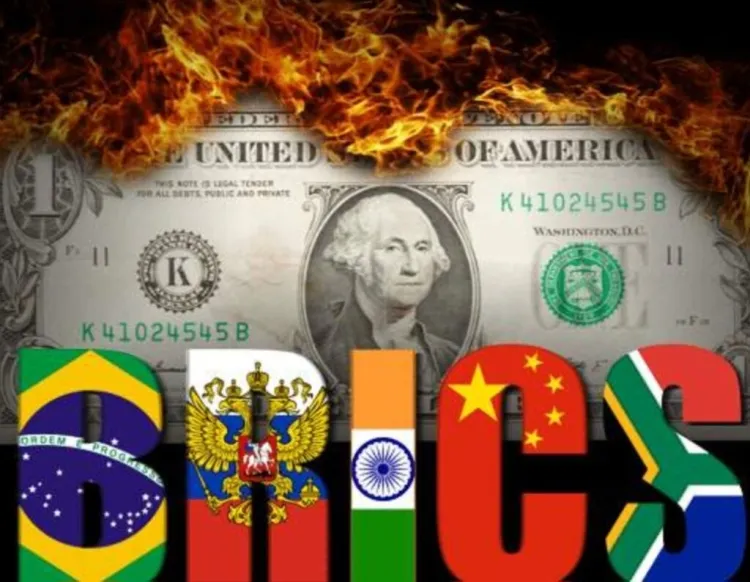BRICS: The Economic Alliance Challenging Dollar Dominance
Trump's declaration of BRICS as 'dead' raises eyebrows amidst rising tensions over dollarization. What does this mean for global economics and India's position?

The BRICS alliance, comprising Brazil, Russia, India, China, and South Africa, has been thrust into the spotlight as U.S. President Donald Trump declares it 'dead.' This statement comes in the wake of Trump's threats to impose 100% tariffs on member nations, fueled by concerns over their efforts to reduce reliance on the U.S. dollar. As the alliance expands to include Egypt, Iran, the UAE, and Ethiopia, with Saudi Arabia contemplating membership, it now represents over 31.5% of global GDP, surpassing the G7's share of 30%.
Understanding Dollarization Concerns
Trump's anxiety over BRICS stems from the growing trend of dollarization—an initiative aimed at diminishing dependence on the U.S. dollar for international trade and reserves. While India has refrained from actively pursuing a dollarization policy, other BRICS nations have made significant strides in this direction. Since 2001, the share of the U.S. dollar in global foreign exchange reserves has declined from over 70% to approximately 59% as of early 2023. The BRICS+ bloc now accounts for 37% of emerging market fuel trade, indicating a notable shift away from dollar dominance in global energy transactions.
India's Strategic Position
For India, BRICS serves as a vital multilateral platform aimed at reforming the global financial system, traditionally dominated by Western institutions. The alliance facilitates India's trade access to Central Asia through Iran and North Africa via Egypt, enhancing its economic gateways. Despite the shift towards alternative financial mechanisms, India continues to maintain strong ties with the U.S. and its allies, highlighting the delicate balance it must navigate amidst rising geopolitical tensions.
The Challenge of Currency Replacement
While countries like China and Russia have made substantial progress in reducing dollar reliance—China increasing yuan-based trade settlements significantly—replacing the dollar remains a complex challenge. The dollar still accounts for nearly 90% of global forex transactions, maintaining its entrenched position in international finance. The historical advantages enjoyed by the dollar, including deep capital markets and a stable legal system, further complicate efforts to establish alternative currencies as dominant players.
Geopolitical Implications
Trump's tariff threats add a layer of complexity for BRICS nations, particularly India, as they navigate their economic partnerships carefully. The geopolitical landscape is shifting, with countries increasingly wary of over-reliance on the U.S. financial system. The freezing of $300 billion in Russian reserves after the Ukraine invasion has prompted BRICS nations to explore alternative financial systems, such as the newly announced BRICS SPAY system and central bank digital currency initiatives.
Conclusion
As the battle for global currency dominance intensifies, the future of the dollar is uncertain. While the BRICS alliance continues to push for reduced dollar dependency, the dollar's status as the world's dominant reserve currency remains unchallenged for now. The ongoing developments within BRICS and the responses from global powers will shape the economic landscape in the years to come. The interplay between BRICS' ambitions and the U.S.'s protective measures will be critical in determining the trajectory of international trade and finance.
Stay informed about the evolving economic dynamics and their implications for global markets.
What's Your Reaction?















